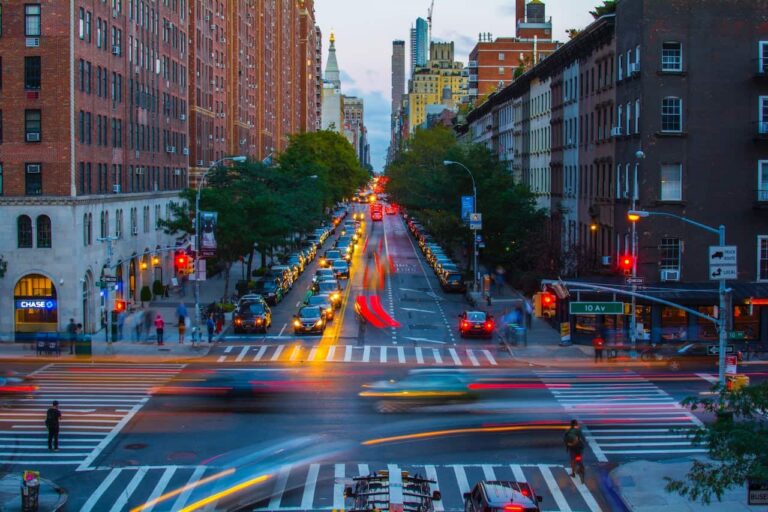Lowering speed limits to 30 km/h to prevent traffic accidents, facilitate walking and cycling, ease traffic congestion, and improve air quality? A solution that really seems to work.
There are in fact many examples of cities that have successfully implemented so-called ’30 zones’. I.e. urban areas where the maximum permitted speed is 30 km/h instead of the canonical 50. These include many European cities such as Copenhagen, Berlin and Brussels, true pioneers of slow mobility.
In this article, we will find out what are, on the one hand, the benefits of reducing speed limits to 30 km/h. And, on the other hand, what are the main criticisms levelled at such a measure. And, why these are often unfounded. Moreover, as we will see, the benefits of 30 km/h zones are many, yet a cultural change is still needed to really appreciate them.
Table of Contents
Zone 30: what are they and how do they work?
As the name suggests, 30 zones are nothing more than circumscribed areas of a city in which the maximum permitted speed limit is lowered from the usual 50 km/h on urban roads to 30 km/h.
These areas, which are generally within the city’s major thoroughfares, and marked by special signs both at the entrance and exit, have the main purpose of improving urban road safety. Especially in light of the high number of accidents involving hundreds of thousands of motor vehicles, pedestrians and velocipedes every year.
In order to reverse the trend of recent years, 30 zones should also include the design of measures to promote walking and cycling. Such as increasing the number of cycle paths, pedestrianised squares and pedestrian areas.
The ultimate goal should be to turn entire cities into 30 zones. As has already happened in the Belgian capital. In Brussels, in fact, from 1 January 2021, the City 30 measure was launched, which envisages a 30 km/h limit in the entire metropolitan area, with the exception of some suburban arteries. City 30 is also under discussion in Italy, with Milan and Rome expected to take the first steps in this direction by early 2024.
Read also: Cycling is the happiest mode of commuting to work: all the benefits
The advantages of 30 zones: more safety, less pollution
Not only more safety for pedestrians and cyclists and, in general, an improvement in the conditions of urban mobility. But also a reduction in the levels of air and noise pollution. And -even- a considerable saving for motorists themselves: these are the main advantages of zones 30.
- Greater safety on urban roads: as we explained above, reducing speed limits means protecting the ‘most vulnerable’ users. Namely pedestrians, cyclists, the elderly and children, who are very often the main victims of urban accidents;
- Improving urban mobility: 30 zones encourage the planning and expansion of pedestrian zones and bicycle lanes. These are tools that help make traffic on the roads more ‘democratic’. As well as – as we will see shortly – more sustainable;
- Less smog and noise pollution: limiting speed also helps reduce air and noise pollution. There are mainly two reasons for this. On the one hand, reducing speed means being able to maintain a smoother driving style. And, avoid abrupt stops and starts (so-called ‘stop and go’). On the other, 30 zones are a powerful incentive to use alternative and green means of transport. Such as bicycles, electric scooters, but also traditional public transport;
- Savings for motorists: linked to the previous point, a smoother driving style also leads to lower fuel consumption and slower brake pad wear. Motorists will therefore also benefit from a reduction in maximum permitted speed limits.
Although the gains from an extension of the 30 zone are considerable, there are still many criticisms and misgivings expressed by citizens and politicians.
Read also: What is the “15-minutes city” model, a strategy for smart and sustainable urban planning












